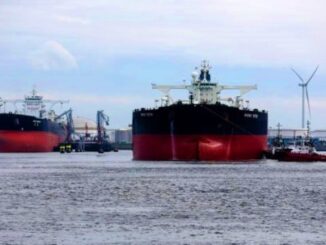
In an era where the United States stands as the world’s leading exporter of liquefied natural gas (LNG), achieving true energy dominance remains elusive due to outdated and burdensome regulations. The Merchant Marine Act of 1920, better known as the Jones Act, continues to impose significant barriers on domestic energy transport, inflating costs and stifling efficiency. Compounding this issue are newly proposed shipbuilding rules from the U.S. Trade Representative (USTR), which threaten to disrupt the booming U.S. LNG export sector by mandating the use of American-built and flagged vessels—requirements that experts deem practically unfeasible. As global demand for American energy surges amid geopolitical tensions, these policies risk undermining the nation’s strategic advantages in the energy market. The Enduring Grip of the Jones Act on U.S. Energy Supply ChainsEnacted over a century ago, the Jones Act mandates that all goods transported by water between U.S. ports must be carried on ships that are built, owned, and crewed by Americans. Originally intended to bolster national security and protect the domestic shipping industry, the law has instead created a web of inefficiencies that disproportionately affect the energy sector.
Today, with only about 95 Jones Act-compliant vessels in operation, the U.S. severely underutilizes waterborne transport compared to other developed nations, forcing more freight onto roads and railroads, which are not only more expensive but also environmentally damaging and infrastructure-straining.
Are you from California or New York and need a tax break?
The impacts on oil and gas are particularly stark. For instance, during a polar vortex in New England under the Trump administration, the region—despite the U.S. being a net exporter of natural gas—could not receive domestic LNG shipments due to the lack of compliant vessels. Instead, it relied on imports from foreign sources, including Russia.
Similarly, Hawaii sources up to a third of its oil from Russia to avoid the exorbitant costs of Jones Act shipping, even as executive orders have sought to block such imports amid the Ukraine conflict.
These examples illustrate how the Act fosters dependency on foreign energy, directly contradicting the goals of energy independence and dominance. Critics argue that the Jones Act drives up costs for shippers, which are inevitably passed on to consumers in the form of higher energy prices. By limiting competition from foreign-built ships, it creates a monopolistic environment that hampers supply chain fluidity. This is especially problematic for offshore wind projects, where the scarcity of specialized vessels delays installation and maintenance, slowing the transition to renewables and perpetuating reliance on fossil fuels.
Proponents of reform, including economists from Texas Tech University and the Hoover Institution, call for waivers—particularly through the Defense Department’s authority for national security reasons—to allow foreign vessels into domestic routes, thereby reducing inflation and enhancing energy efficiency.
New Shipbuilding Rules: A Potential Roadblock to LNG Export GrowthBuilding on the protectionist ethos of the Jones Act, the USTR’s proposed shipbuilding rules aim to counter China’s dominance in global shipbuilding by requiring a growing share of U.S. LNG exports to be transported on American-flagged and built vessels. Starting in 2028, 1% of exports must use U.S.-flagged ships, escalating to include U.S.-built vessels from 2029, with the mandate reaching 15% by 2047.
While the intent is to revitalize U.S. shipyards, industry stakeholders warn that these rules could backfire spectacularly. The U.S. hasn’t constructed an LNG carrier since 1980, and current shipyard capacity, technical expertise, and supply chains are woefully inadequate to meet the demand.
To comply with even the initial 1% threshold by the end of the decade, at least six new U.S.-built LNG vessels would be needed—but building them could cost two to four times more than in leading shipbuilding nations like South Korea or China, due to higher labor costs and infrastructure gaps.
Groups like the Center for Liquefied Natural Gas (CLNG) and the American Petroleum Institute (API) have voiced strong opposition, labeling the mandates as “impossible” and detrimental to U.S. exporters. With the U.S. exporting 1,396 LNG cargoes last year and projections for nearly double that volume soon, any bottleneck could cede market share to competitors and weaken America’s position as the top global supplier.
Moreover, the global LNG fleet includes only one U.S.-flagged vessel, which is outdated and half the size of modern carriers, underscoring the scale of the challenge.
The Combined Stranglehold: Undermining Energy Dominance
Together, the Jones Act and these new rules form a double bind on U.S. energy dominance. The Jones Act already restricts domestic energy flows, forcing regions to import what could be sourced internally and inflating costs across the board. The new export mandates extend this protectionism internationally, potentially derailing the LNG boom at a time when allies in Europe and Asia increasingly depend on American supplies to offset Russian energy weaponization.This regulatory tandem risks not only higher prices and reduced competitiveness but also national security vulnerabilities. By prioritizing a revival of shipbuilding over practical energy logistics, policymakers may inadvertently empower foreign rivals. As the article from the Wall Street Journal notes, relaxing such cabotage restrictions could provide leverage in trade negotiations and accelerate projects like offshore wind, ultimately benefiting consumers and the economy.
A Call for Reform: Unshackling American Energy
To achieve genuine energy dominance, the U.S. must confront these archaic barriers head-on. Waiving the Jones Act for critical energy routes, as suggested by experts, could swiftly alleviate supply chain bottlenecks and lower costs.
Similarly, reconsidering the USTR’s shipbuilding rules—or at least extending timelines to build realistic capacity—would safeguard the LNG export surge without imposing unattainable demands.
Oilprice.com writes The U.S. does not have the shipyard capacity, technical capability, or supply chains to significantly ramp up shipbuilding of U.S. LNG carriers to meet the USTR requirements. In addition, the U.S. currently lacks the highly specialized and skilled crews for the operation and maintenance of LNG ships, CLNG said. The U.S. exported a total of 1,396 LNG cargoes last year. At the same time, the global LNG vessel fleet has 792 operating tankers, per data cited by the CLNG trade association. Of these, only one is a U.S.-flagged ship, but it is half the capacity of a modern LNG carrier and primarily serves to deliver LNG to Puerto Rico.”
The requirements to be American-built, flagged, and staffed should be permanently removed. I agree we need to revitalize our shipbuilding businesses, but the heavy lifting is blocked by the regulations and disincentives of the Jones Act.
Is Oil & Gas Right for Your Portfolio?
Crude Oil, LNG, Jet Fuel price quote
ENB Top News
ENB
Energy Dashboard
ENB Podcast
ENB Substack






